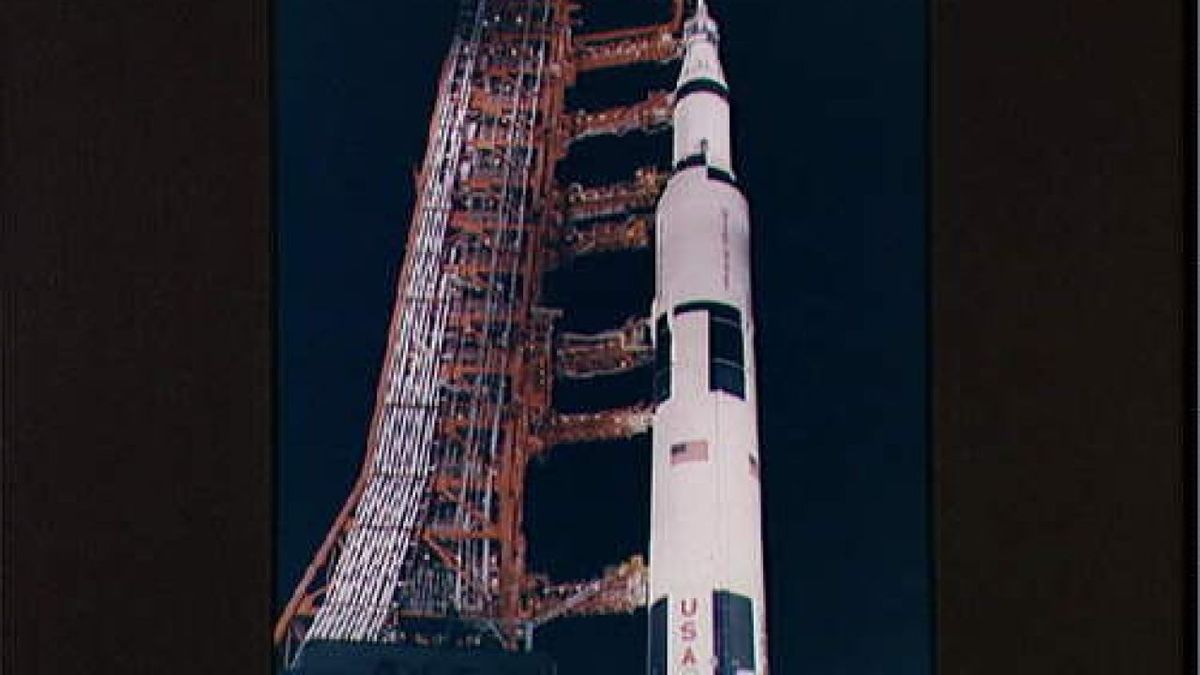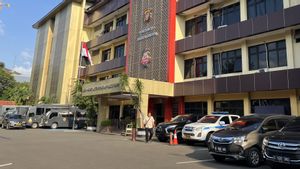JAKARTA – Today's history, April 11, 1970, records the launch as well as the failure of the Apollo 13 mission to land on the moon. Launched from the base of Cape Canaveral, Florida, United States, Apollo 13 containing three astronauts James A. Lovell, John L. Swigert, and Fred W. Haise was supposed to land on the moon.
The goal of the Apollo 13 mission was to explore the Fra Mauro plateau on the lunar surface. The name for the plateau on the moon was taken from a genius cartographer from Venice, Italy, Fra Mauro (1400-1464), who was able to make detailed maps of the earth in his time.
If they managed to land on the moon, the task of the Apollo 13 astronauts was to explore the Imbrium Basin in Fra Mauro. They will take samples, and conduct geological experiments.

Within 56 hours since it was launched on April 11, Apollo 13's condition is still safe. At 09.00 am on April 13, Apollo 13 was at an altitude of about 300 thousand km above the earth's surface. The crew had just had breakfast, finished a television interview, and checked out Aquarius as a module to land on the moon.
The planned moon landing is scheduled for the morning of April 14. The Apollo 13 mission itself is planned to last a week, April 11-17, 1970. According to the landing scenario, Lovell and Haise will descend to the moon using the Aquarius module, while Swigert waits in the Apollo 13 command capsule.
Lovell and Haise were supposed to be the fifth and sixth people to walk on the moon. The four astronauts who have set foot on the previous moon are: Neil Armstrong and Edwin Aldrin (Apollo 11), and Charles Conrad and Allan Bean (Apollo 12).
Astronaut Rescue MissionIn the early hours of April 14, all plans suddenly fell apart. At 2:59 a.m. Lovell and Swigert reported to NASA headquarters and Apollo 13 command in Houston, Texas that there was an explosion on board.
“Okay Houston, we have a problem here. Main B is experiencing a voltage drop," Swigert reported to NASA.
Swigert reported that there was an explosion in oxygen tank number 2, codenamed Main B. The explosion cut off the supply of oxygen, electricity and water to the Apollo 13 main capsule. It was reported that Lovell looked out the window and saw gas leaking from the plane. The leak turned out to be oxygen that was wasted outside due to the explosion.

The moon landing mission was immediately canceled, and replaced with a mission to bring the astronauts back to Earth safely. NASA's command center in Houston ordered the pilots to leave the Apollo 13 main capsule, moving into the Aquarius landing module.
This move is not without risk, because the Aquarius is only designed to accommodate two people. The supply of oxygen in the Aquarius is only enough for two people with a maximum time of 45 hours. There are now three people inside the landing module, and it will take them 90 hours to reach earth.
The Apollo 13 astronauts at that time seemed to be adrift in space. The Aquarius landing module does not have a navigation system as sophisticated as the main module. Supplies of water, oxygen, and electricity are also much less. The Aquarius module only took 2 hours to prepare everything, and align the landing points before finally hurtling to earth.

It takes 3 days to travel from the point of the moon's orbit to the landing site on earth. And during the remaining time, the three astronauts continue to try to repair the damage in the main capsule. The damage was finally managed to fix. The main capsule again has the power to penetrate Earth's orbit.
After experiencing a tense day in space, the Apollo 13 astronauts returned to Earth. The main module of the spacecraft sank in the Pacific Ocean. The failed Apollo 13 mission was then documented in the documentary drama of the same name. The 1995 film Apollo 13 starred Tom Hanks as James Lovell, Kevin Bacon as John Swigert, and Bill Paxton as Fred Haise. The failure of the Apollo 13 mission is an interesting historical story today, April 11, 1970.
The English, Chinese, Japanese, Arabic, and French versions are automatically generated by the AI. So there may still be inaccuracies in translating, please always see Indonesian as our main language. (system supported by DigitalSiber.id)









